Watersheds Work – Bucks County
Resources for Education and Outreach
Teaching Tools
Hands-on learning resources for teaching function and value of watersheds. Free to use for Bucks County municipalities, schools, civic and nonprofit organizations.
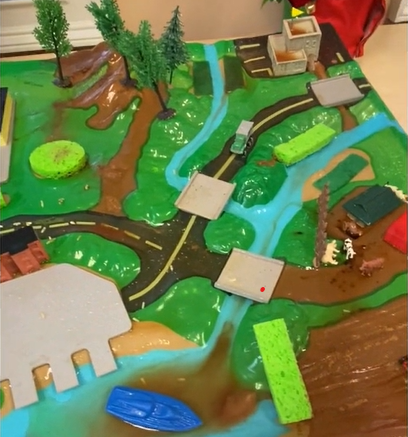
What’s In a Watershed
Non-point Source Pollution
Enviroscape models show how rain events create pollutant laden runoff into streams and lakes. Correlated to land uses, non-toxic household products are sprinkled on the model until the audience “makes it rain”. Two models are available, the standard model shows a typical watershed while the restoration model includes stormwater management, or green stormwater infrastructure (GSI), features.
Quick Look Video

How Water and Land Move
Stream dynamics / Bank erosion / Climate
The EmRiver EM2 stream model offers a continuous flow of water through a specially designed media to demonstrate how particle sizes influence erosion, accretion, and channel migration in a streambed.
Adjustable water flow shows how storm events lead to the collapse of banks and build up of gravel bars. An interactive demonstration for children and adults alike. Requires minimum one hour setup and breakdown.Quick Look Video

Infiltration
To Soak-in or Run-off
Vegetation matters! Demonstrate how diverse, native plants encourage water to soak through soil while impermeable (pavement) and less permeable (turfgrass) produces runoff instead of groundwater recharge.
Video Link for Demonstration
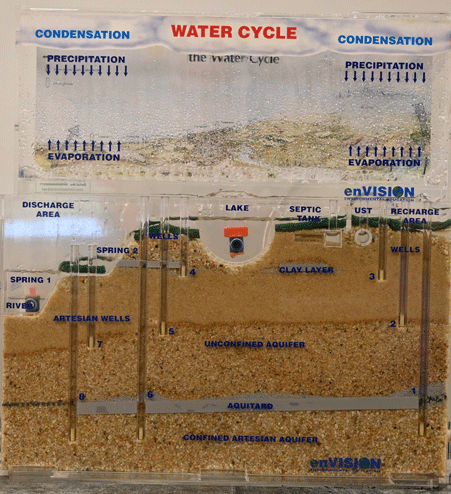
Below the Surface
Aquifers and You
Link for Youtube Demonstration

A Closer Look
Zoom in
Use these digital scopes to see the detail of the life around you. A leaf, moss, fungi, or macroinvertebrates come to life. Six scopes are available.
Quick Look Video
Ready to Reserve Materials for your event? Start Here!
Planning a Project?
The tools and gear to make your project safe and efficient, available without charge.
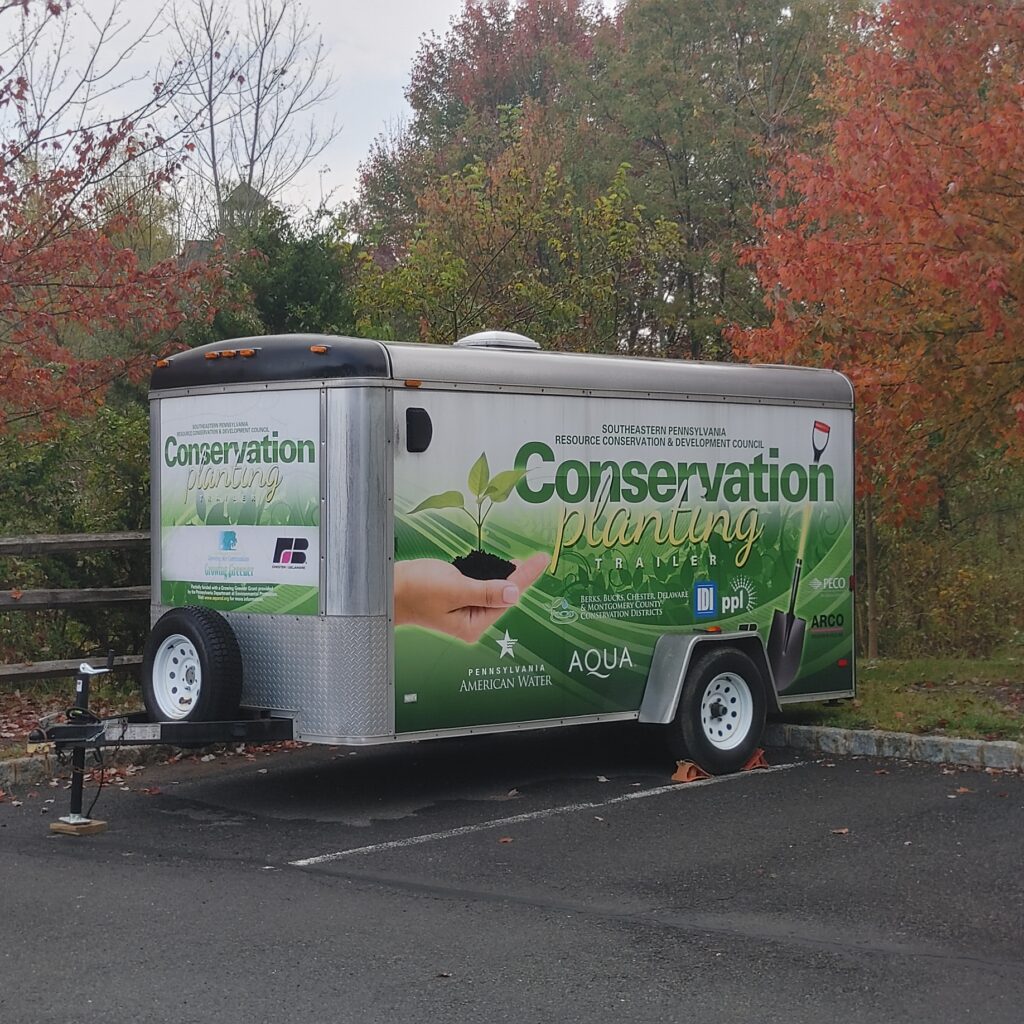
The Conservation Planting Trailer is stocked with everything you’ll need for invasives control, tree planting, green stormwater and other projects. Reserve the trailer for a day or a week to access gas/battery powered equipment, hand tools, and personal safety gear. Made possible by the Resource Conservation & Development Council of Southeastern Pa. Contact Karen at KOgden@BucksCCD.org
Programs / Presentations
Community members deliver watershed education programs. For Bucks County municipalities, schools, civic and nonprofit organizations.
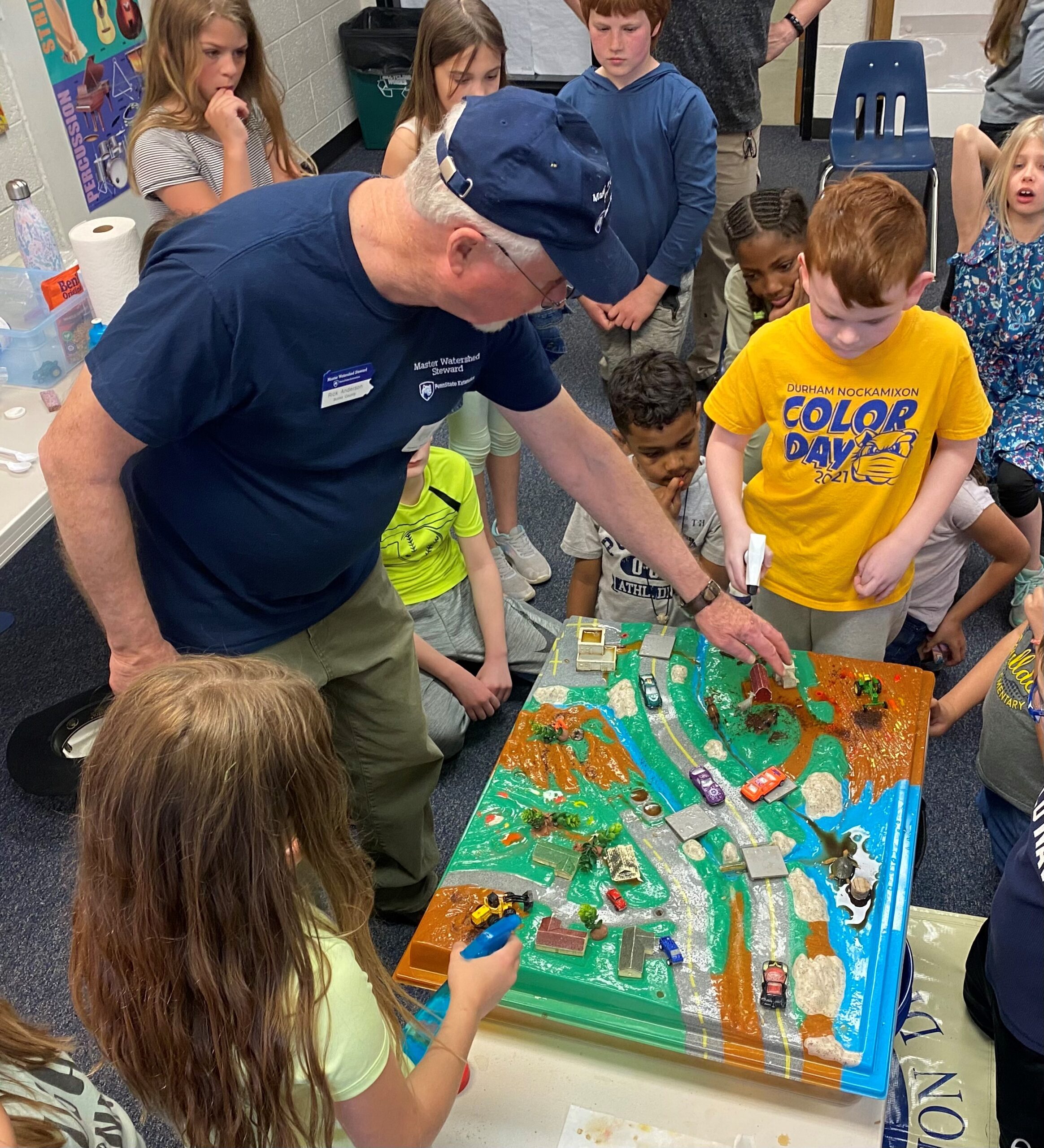
What’s In a Watershed
Non-point Source Pollution
Working with the simulated land uses depicted on the model, non-toxic household products are sprinkled on the model until the audience “makes it rain”. Two models are available, the standard model shows a typical watershed while the restoration model includes stormwater management, or green stormwater infrastructure (GSI), features.
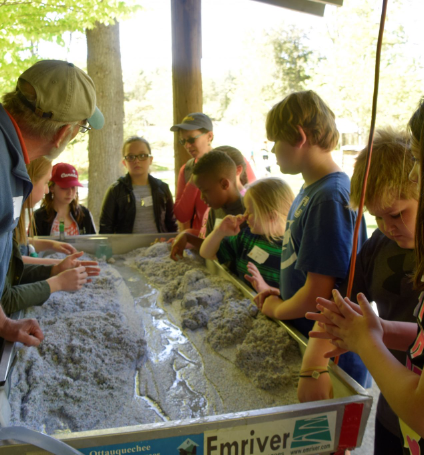
Water Changing Land
Stream dynamics / Bank erosion / Climate
The model requires a minimum of one hour for setup and breakdown. This program is suggested for occasions where a single setup can be left in place for 4 hours or more with groups of 6-10 individuals moving through at intervals of about 30-45 minutes (depending on age group).

Native Plants
To Soak-in or Run-off
Vegetation matters! A presenter discusses why native plants are crucial to ecosystem health. From pollinators to migratory birds, to water quality, native plants are key.
Paired with a short infiltration demonstration the audience can see how native plants encourage water to soak through soil while impermeable (pavement) and less permeable (turfgrass) produces runoff instead of groundwater recharge.
Learners will also be introduced to the problem of invasive, non-native species in our region.
Aquifers
The Groundwater Connection
Easily paired with stormwater or native plant topics.
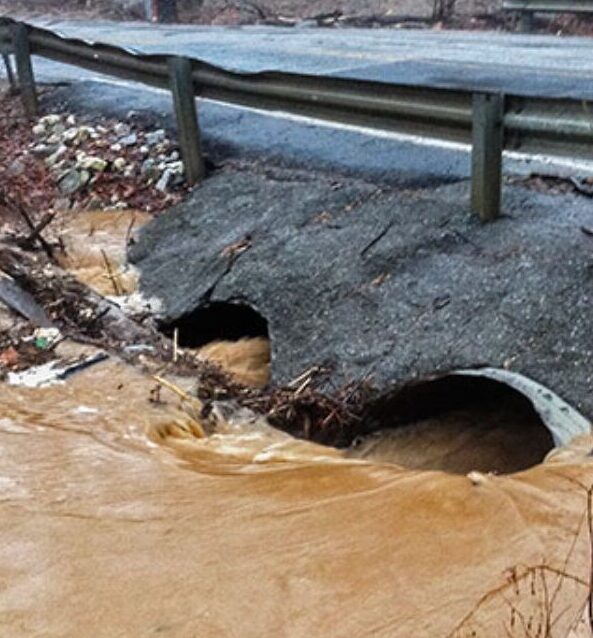
Stormwater Basics
SCREEN-SLOW-SOAK-STORE
Solutions to stormwater problems are presented – from backyard practices to engineered landscape features.
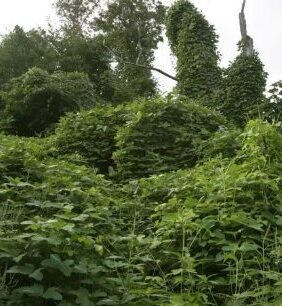
When Plants get Pushy
When Plants get Pushy
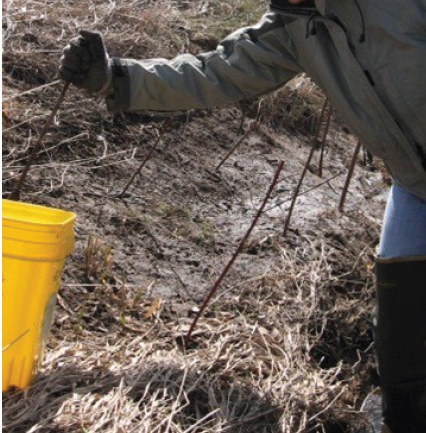
Live Staking: Backyard Stream Repair
A Low Cost Method

Reducing your Plastic use
Tips and Tricks

Other Topics, not limited to:
- Backyard Wildlife Habitat
- Native Plants in the Garden: Selection, Use, and Maintenance
- Why did my Native Garden fail?
- Climate Change and Global Warming
- Composting
- Stream Bank Erosion Monitoring
- Native Plants for Birds
